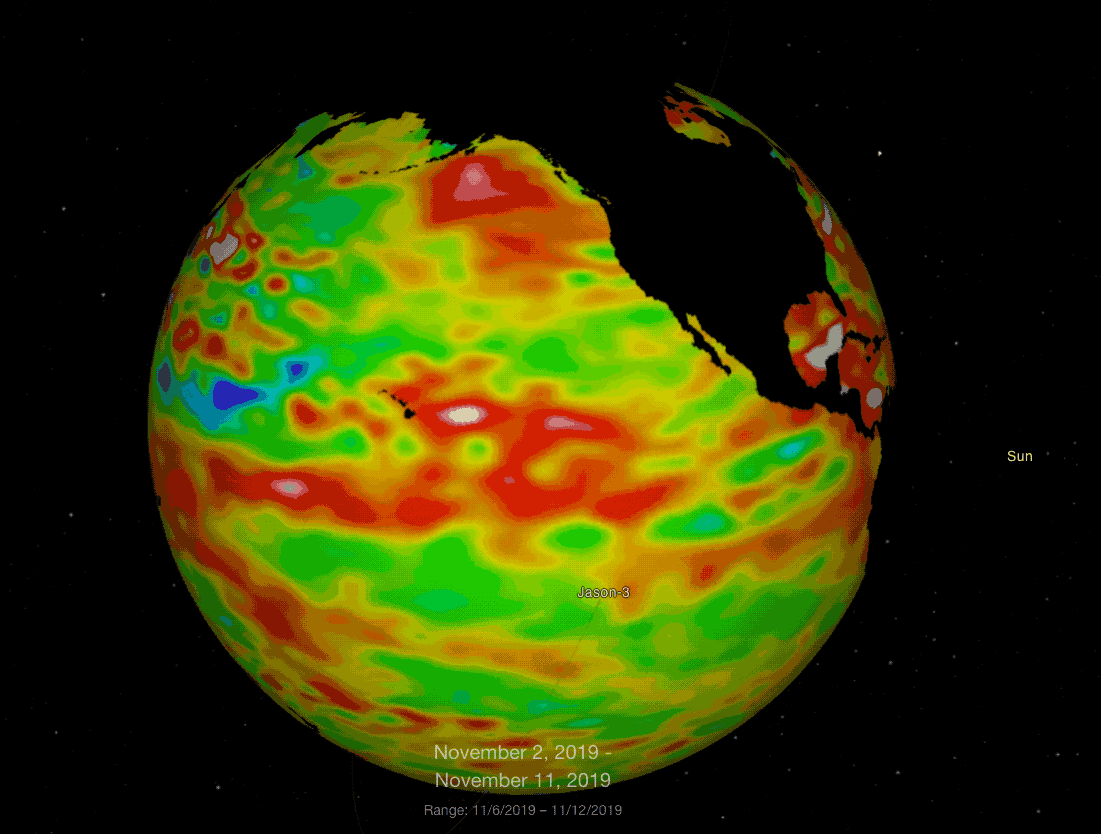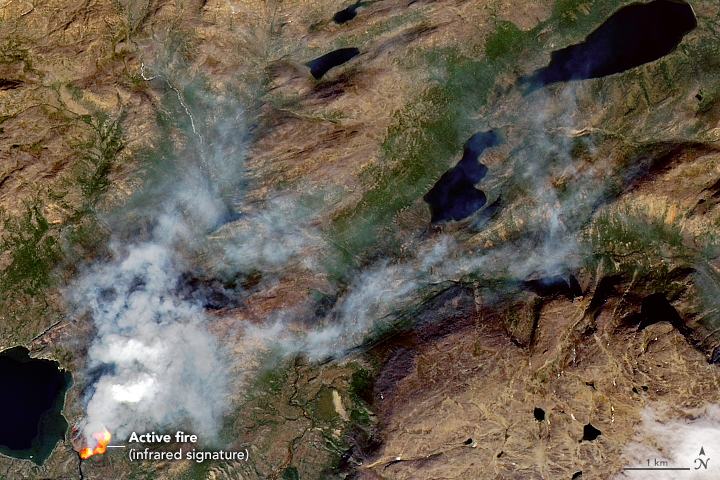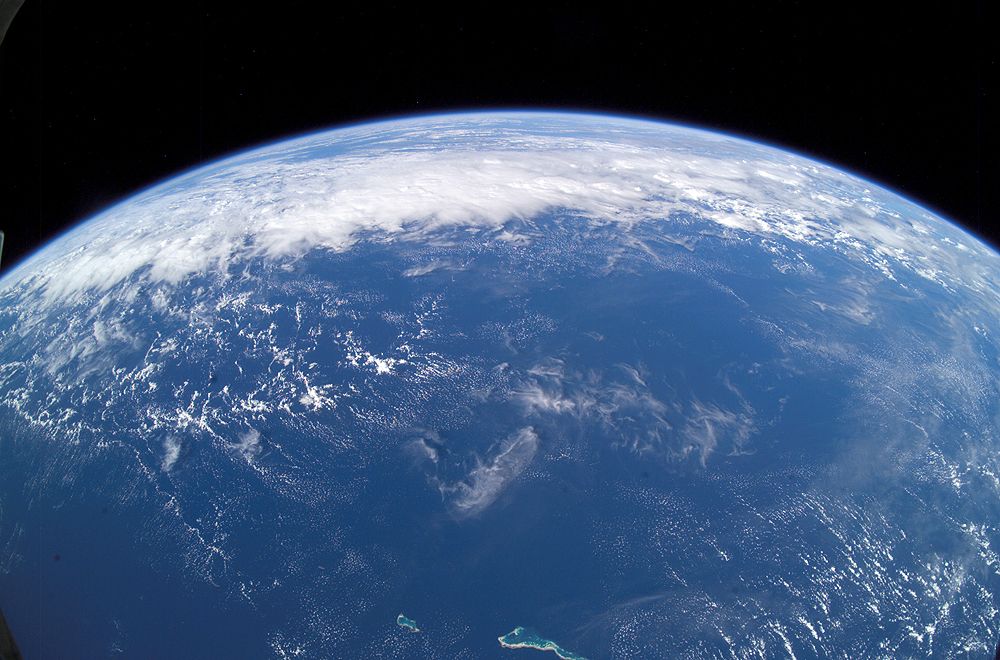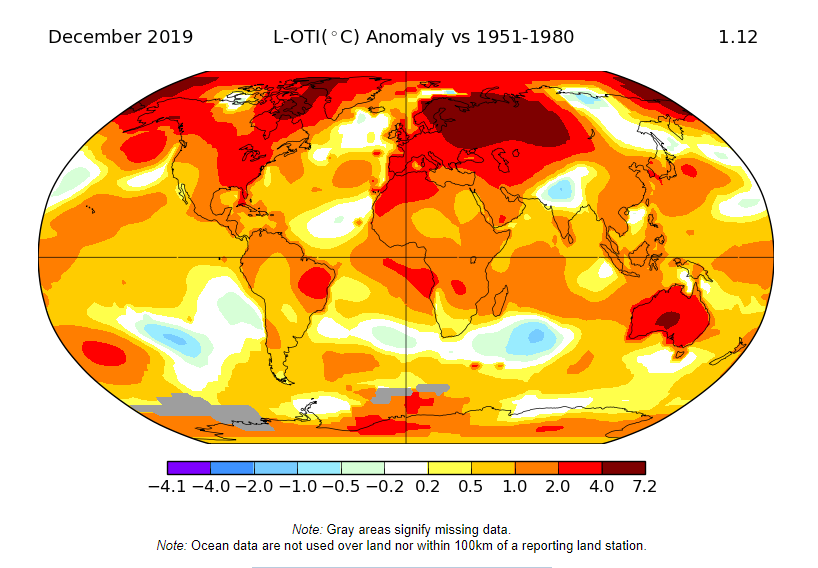NASA and the NOAA just announced that 2019 was the second hottest year on record. It barely edged out 2016, the previous warmest year. And both 2019 and 2016 are part of the global warming trend: the last five years have been the warmest five years on record. And the last decade was the warmest decade.
Continue reading “According to NASA, 2019 Was the Second Hottest Year on Record”New Satellites Will Tell Us Exactly how Quickly the Oceans are Rising

One of the clearest signs of global warming, unless you live next to a glacier, are rising oceans. Now a joint mission involving the US and European countries is launching a pair of satellites to monitor the rising sea levels. The two satellites will monitor the oceans until 2030.
Continue reading “New Satellites Will Tell Us Exactly how Quickly the Oceans are Rising”This Artificial Leaf Turns Atmospheric Carbon Dioxide Into Fuel

There is no doubt that climate change is a very serious (and worsening) problem. According to a recent report by the Intergovernmental Panel on Climate Change (IPCC), even if all the industrialized nations of the world became carbon neutral overnight, the problem would continue to get worse. In short, it’s not enough to stop pumping megatons of CO2 into the atmosphere; we also have to start removing what we’ve already put there.
This is where the technique known as carbon capture (or carbon removal) comes into play. Taking their cue from nature, an international team of researchers from the University of Waterloo, Ontario, have created an “artificial leaf” that mimics the carbon-scrubbing abilities of the real thing. But rather than turning atmospheric CO2 into a source of fuel for itself, the leaf converts it into a useful alternative fuel.
Continue reading “This Artificial Leaf Turns Atmospheric Carbon Dioxide Into Fuel”Weekly Space Hangout: October 16, 2019 – Jeffrey Kargel Talks Climate Change on Earth and Beyond
Hosts:
Fraser Cain (universetoday.com / @fcain)
Allen Versfeld (https://www.urban-astronomer.com/ / @uastronomer)
Dr. Morgan Rehnberg (MorganRehnberg.com / @MorganRehnberg & ChartYourWorld.org)
Moiya McTier (https://www.moiyamctier.com/ / @GoAstroMo)
Jeff Kargel is a Senior Scientist at the Planetary Science Institute in Tucson, Arizona. He is a geologist, a glaciologist, and a planetary scientist. Climate change is a major thread, and that is what he is here today to talk about.
There’s A Fire in Greenland… Again. It’s 10 Degrees Hotter Than Normal

As global warming ramps up, expect to see Greenland in the news a lot. That’s because its ice sheet is under threat of melting. But that’s not the only reason. The other reason is fire.
Continue reading “There’s A Fire in Greenland… Again. It’s 10 Degrees Hotter Than Normal”New Study Shows How Breaching “Carbon Threshold” Could Trigger Mass Extinction in Earth’s Oceans

Between the scientific community, governments, humanitarian organizations, and even military planners, climate change is considered to be the single greatest threat facing humanity today. Between the increases in famine, disease, flooding, displacement, extreme weather, and chaos that result, it is clear that the way we are causing our planet to get warmer is having dire consequences.
But there a number of scenarios where the harm being done now could result in a runaway effect leading to mass extinctions. This possibility was illustrated in a recent study conducted by MIT professor Daniel Rothman with the support of NASA and the National Science Foundation (NSF). According to Rothman, we are in danger of breaching a “carbon threshold” that could lead to a runaway effect with Earth’s oceans.
Continue reading “New Study Shows How Breaching “Carbon Threshold” Could Trigger Mass Extinction in Earth’s Oceans”Airplane Contrails are Contributing to Global Warming Too
To the scientifically uninitiated, it might seem like a frivolous idea: That those slight, wispy clouds that trail behind jet aircraft at such high altitudes could contribute to climate change. But they do.
Scientists love to measure things, and when they measured these contrails, which is short for condensation trails, they found bad news. Though they look kind of beautiful and ephemeral on a summer day, they pack an oversize punch when it comes to their warming effect.
Continue reading “Airplane Contrails are Contributing to Global Warming Too”NASA’s Long-Term Climate Predictions have Proven to be Very Accurate, Within 1/20th of a Degree Celsius

There are a handful of major science institutions around the world that keep track of the Earth’s temperature. They all clearly show that the world’s temperature has risen in the past few decades. One of those institutions is NASA.
Continue reading “NASA’s Long-Term Climate Predictions have Proven to be Very Accurate, Within 1/20th of a Degree Celsius”Today is the Highest Concentration of Atmospheric CO2 in Human History. 415 Parts Per Million. Last Time it Was This High, There Were Trees at the South Pole
Think about this for a minute: We humans and our emissions are helping turn back the climatological clock by 2 or 3 million years, possibly more. Not since that time, called the Pliocene Epoch, has the CO2 ppm risen above 400.
Way back then, the CO2 helped keep the Earth’s temperature 2 to 3 degrees C warmer than it is now. And the Earth was a much different place back then.
Continue reading “Today is the Highest Concentration of Atmospheric CO2 in Human History. 415 Parts Per Million. Last Time it Was This High, There Were Trees at the South Pole”Climate Change Q & A with Bear Grylls
Bear Grylls isn’t a climate scientist, but in his travels around the world as an adventurer, survivalist and host of numerous nature shows, he has witnessed firsthand our planet’s changing climate.
This is especially true in a new series Grylls hosts and narrates on the National Geographic channel called “Hostile Planet.” While the show does not focus on climate change per se, it doesn’t shy away from portraying how our world is rapidly changing and how those changes affect various animal species.
Continue reading “Climate Change Q & A with Bear Grylls”



